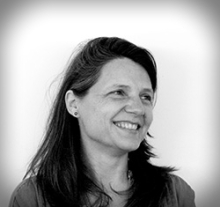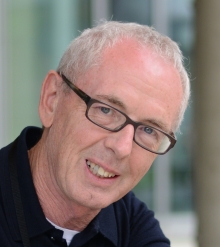
School of Architecture, Art and Design engages with the interior as an expanded practice and through the adaptation or reuse of existing buildings and spaces within cities.
Interiors are the spaces that we inhabit daily, where we move and connect with our material existence. They structure the social fabric of our lives; where and how we eat, sleep, work, and meet with others. Interiors are multiple: they may be domestic, spaces of recreation, institutions, workspaces, or the circulation routes that we walk through within a city.
The research group brings together the interior in its many expanded forms with strong interests
in material practice, the fashioning of space, digital engagement with CCIXR through virtual and mixed reality, representation of interior space through illustrative and sensory methods,, biophilic design, participatory and collaborative practices, and Interior Design education.
The research group aligns with the Heritage Hub developing creative methodologies to engage with historic sites and communities locally in Portsmouth, regionally and internationally. We have ongoing collaborations with historic sites such as Wymering Manor in Cosham and regionally for example at Tyneham Village in Dorset.
The Interior research group is interdisciplinary and transdisciplinary engaging in practice research and material methods to think with ideas, objects, things, human and non human bodies, imaginings, speculations and environmental ecologies.
Our research themes:
- Biophilic Design
- Body, movement and space
- Co-creation: the user as a co-designer
- Design Activism, visualising social, historic and political narratives using collage, artists’ books and scrolls.
- Digital representations of the interior in conjunction with CCIXR
- Drawing interiors: embodied practices and sensory mappings
- Experiential Design
- New Materialist Philosophy; gender and the practice of interior architecture/design
- Practice Research and material methods
- Pedagogy: Assessment for learning; Material and the interior, Collage Methodologies for Interior Education
Our methods include creative practices, such as drawing, writing, conversational processes, artist’s books, semi-structured interviews, and the filming of people’s movements. These methods of representation bring together emotion and affect – for example, through the form of the artists' book.
We have access to motion capture studios, workshops, and advanced architectural technologies, like a 3D printer, and much our research benefits from our partnerships with The Point in Eastleigh – through which we're studying the relationship between dance and architecture – and The Weald and Downland Museum, where we're currently exploring the relationship between historic spaces and advanced software technologies. We're also linked to the CCI Cultural Heritage Research Group.
Projects
- Matter of the Manor – According to Historic England, we observe a building 'in order to ascertain what information it provides about its origins, form, function, date and development'. This says little about the human encounter, emotions and the imagination. This interdisciplinary project explores the overlaps between interior design, and historic building conservation. We're mainly concerned with the forceful emotional engagement of historic settings, and the way historic settings are viewed and experienced. Our design work uses an uninhabited 16th century manor house as a case study. We propose that the house is experienced more poignantly in its transitional state, before any restoration is carried out. Ultimately, we're exploring creative methodologies as a tool for discussion in historic sites, away from the norm of focus groups and questionnaires.
- St Luke's Church, Portsmouth – We're currently working with St Luke’s Church, using iterative and collaborative practices to develop their internal spaces. The process – which involves the church, local community and design team – is intended to work as an open-ended conversation and is being developed through creative practice; material play and 1:1 design proposals.
- We have also received approximately £3,000 in funding for our work from the University's Innovation Accelerator Awards. We are also developing a funding bid to examine the representations of historic sites, and how people make meaning through three sites in Portsmouth: Wymering Manor House, St Luke's Church and Portsea.
- We have also exhibited in Perth and Melbourne, Australia, as part of The Interior Design/Interior Architecture Educators Association (IDEA)
Publication highlights
- Ghaziani, R., Lemon, M., Atmodiwirjo, P. (2021) “Biophilic Design Patterns for Primary Schools”, Sustainability 2021, 13(21), 12207. https://doi.org/10.3390/su132112207
- Ghaziani, R. (2021), "Primary school design: co-creation with children", Archnet-IJAR, Vol. 15 No. 2, pp. 285-299. https://doi.org/10.1108/ARCH-07-2020-0132.
- Milligan, A., Adams, R., & Simpkins, N. B. S. (2020, December). Dooring: Experiential Boundaries. In Experiential Design: Rethinking Relations Between People, Objects & Environments Conference (pp. 116-123). AMPS CIO.
- Adams, R., Milligan, A., & Simpkins, N. (2021). Interior resistance. Journal of Interior Design, 46(1), 11-25.
- Simpkins, N.(2023). Re-pairing: Care and the performance of repair, Proceedings of the International Conference
- Repurposing Places for Social and Environmental Resilience, Editor: Anastasia Karandinou, Counterarchitecture, in collaboration with UEL and Arup, ISBN (ebook): 9781739268107
- Lieberman, O & Mitchell B (2023) MATERIAL ENCOUNTERS::INTRA-ACTIONS/CUTS, 6th European Congress of Qualitative Inquiry, Qualitative Inquiry in the Anthropocene: Affirmative and generative possibilities for (Post)Anthropocentric futures, Congress Proceedings, ISBN: 978-1-86137-677-0 (eBook), UoP.
- Mitchell, B (2022) Drawing in: Bodies in motion, in REMOTE PRACTICES: ARCHITECTURE AT A DISTANCE, ed Matthew Mindrup and Lilian Chee, Lund Humphries.
Exhibitions
- Mitchell, B (2022) Everyday accretions: Drawing with light, Ecologies of Drawing: in Situ, group online exhibition, Loughborough
- Mitchell, B (2021) Osmosis, group exhibition at the Espacio Gallery, London
Discover our areas of expertise
Interior design theory and practice is one of our 8 areas of research expertise in Architecture, Interiors and Urbanism – explore the other 7 below.
Architecture and Urban Design: Histories and Theories
We're researching narratives of place and the construction of new historiographical and theoretical discourses in architecture, interiors, landscape, and urbanism.

Architecture and Interior Design Studios Pedagogies
We're researching issues related to teaching and learning within creative and design disciplines, focusing on pedagogy, curriculum, student engagement, and learning theories.

Computational Culture and Technologies in Architecture and Urban Design
We're studying the integration of digital technology and new technologies in architectural planning, urban planning, and sustainability – and how they can impact future design processes.

Architecture Technologies and Devices
Through our research, we're re-thinking the way we build cities, to better react to environmental issues and challenges, such as climate change.

Historic environments, heritage and conservation
We're looking at how architecture, community and creative technologies can play a role in enhancing historic environments.

Sustainable Urbanism, Landscape and Architecture Design
We're working to inspire and provide the research expertise needed to advance the knowledge required in the practice of sustainable urban development, essential for the transformation and revitalisation of our cities and environments.

Interested in a PhD in Architecture, Interiors & Urbanism?
Browse our postgraduate research degrees – including PhDs and MPhils – at our Architecture, Interiors & Urbanism postgraduate research degrees page.




